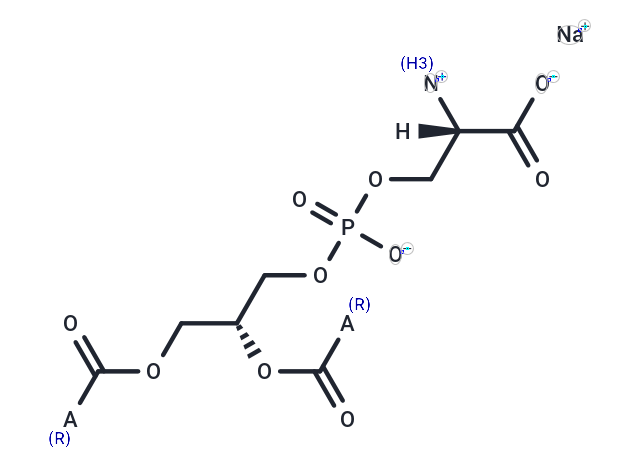Shopping Cart
Remove All Your shopping cart is currently empty
Your shopping cart is currently empty
Phosphatidylserines sodium salt (L-α-Phosphatidylserine sodium salt) is a compound extracted from natural soybean oil residues. It is an active substance present in cell membranes, which can improve nerve cell function and can be used to study nervous system diseases.

| Pack Size | Price | USA Warehouse | Global Warehouse | Quantity |
|---|---|---|---|---|
| 1 mg | $658 | 35 days | 35 days | |
| 5 mg | Inquiry | 35 days | 35 days | |
| 10 mg | Inquiry | 35 days | 35 days | |
| 25 mg | Inquiry | 35 days | 35 days |
| Description | Phosphatidylserines sodium salt (L-α-Phosphatidylserine sodium salt) is a compound extracted from natural soybean oil residues. It is an active substance present in cell membranes, which can improve nerve cell function and can be used to study nervous system diseases. |
| Synonyms | Phosphatidylserines sodium salt (From soybean), L-α-Phosphatidylserine sodium salt |
| Formula | N/A |
| Cas No. | 383908-63-2 |
| Smiles | [R]C(OC[C@@H](OC([R])=O)COP(OC[C@@]([NH3+])([H])C([O-])=O)([O-])=O)=O.[Na+] |
| Storage | store at low temperature | Powder: -20°C for 3 years | In solvent: -80°C for 1 year | Shipping with blue ice/Shipping at ambient temperature. |
| Solubility Information | Chloroform: Soluble |
| Size | Quantity | Unit Price | Amount | Operation |
|---|

Copyright © 2015-2026 TargetMol Chemicals Inc. All Rights Reserved.